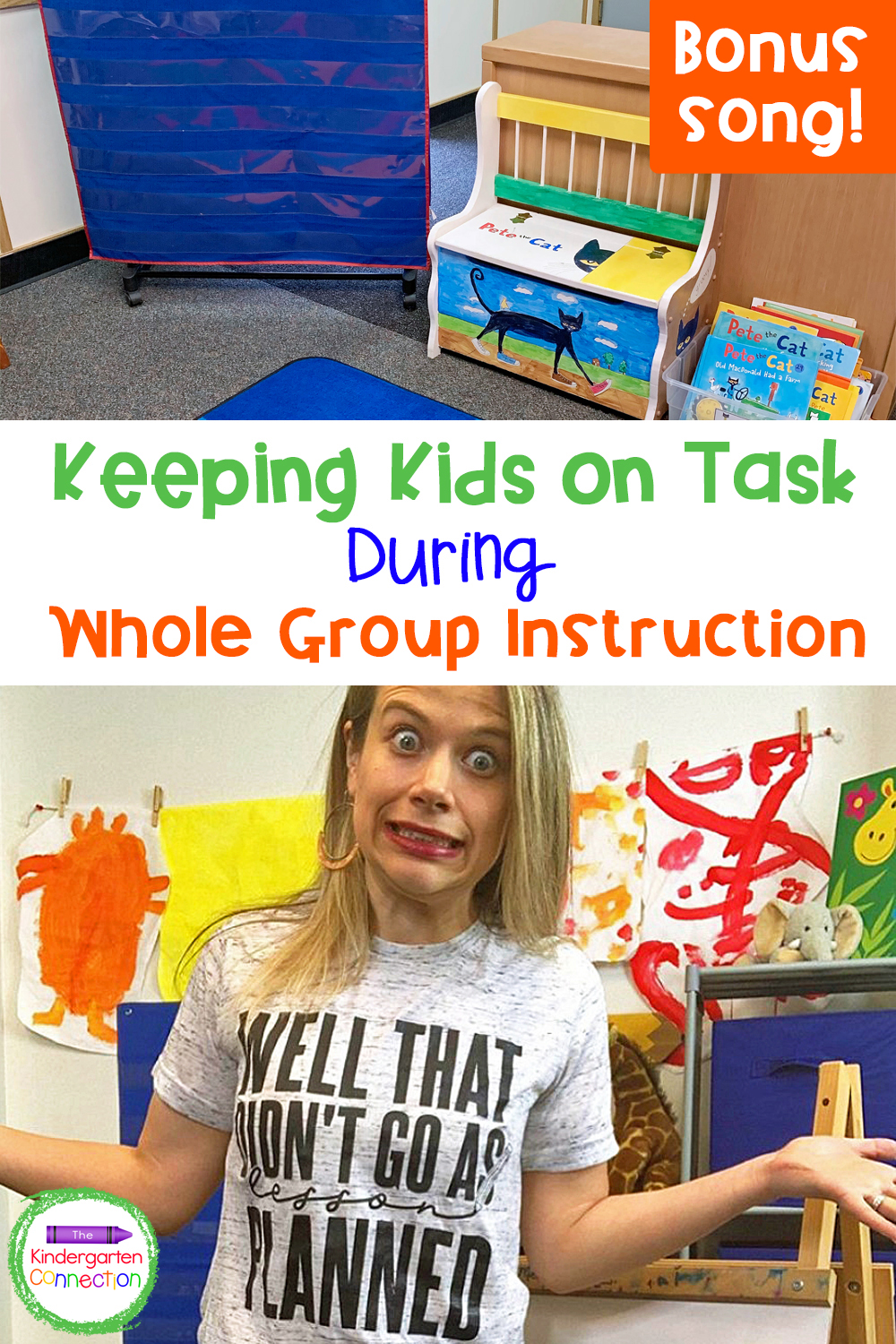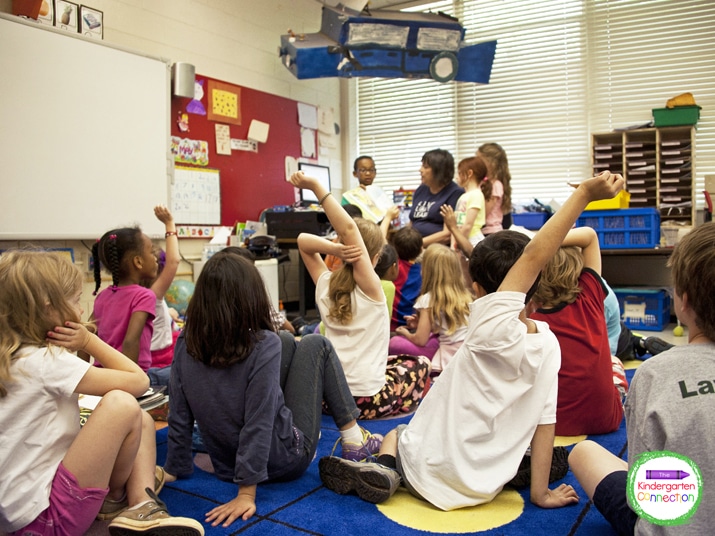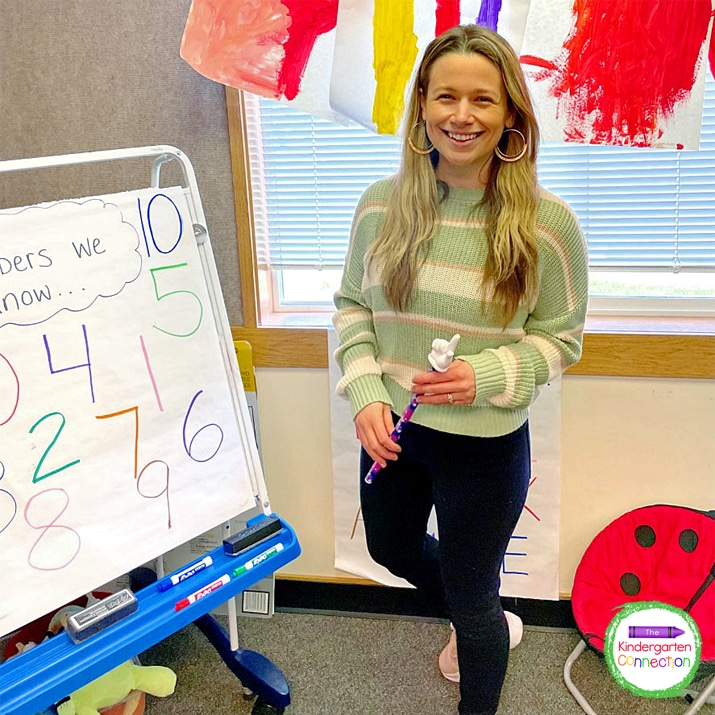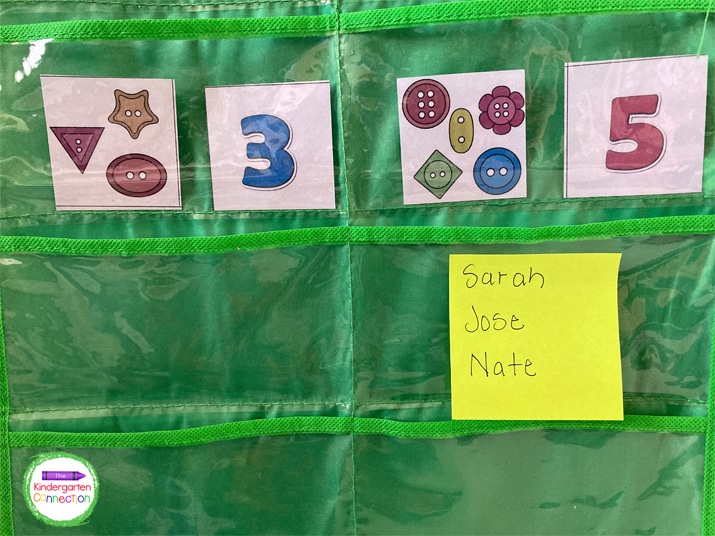How to Keep Kids On Task During Whole Group Instruction
This post contains affiliate links for your convenience. View our full disclosure policy here.
Are you an early childhood educator? Then chances are, you have been in a situation where your students wanted to share “off-topic” stories at inappropriate times. We’ve all been there and it’s not convenient or easy. As teachers, we want to give our students our full attention but we also have a mile-long list of important things that need to be accomplished every day. Today I’d like to share my top tips for how to keep kids on task during whole group instruction while still allowing them to feel acknowledged and heard!
*For even more teacher tips and how to create a playful learning environment in your classroom, be sure to join us in P.L.A.Y. (Playful Learning All Year)!

How to Keep Kids On Task During Whole Group Instruction
“Did you know my grandma has a cat???” Any other teachers get comments like this when you are talking about patterns or literally anything but cats? Sometimes it can be tempting to shut kids down quickly – but then we are doing just that, shutting them down. However, we also cannot derail and follow the story because, give it more than 1.5 seconds and suddenly 20 other 5 year olds also have grandmas with cats.
But let me remind you that off-topic questions and comments during whole group instruction or storytime is totally normal. It may seem out of left field, but something we aren’t picking up on in our story or lesson could be reminding them that their sister likes Pop Tarts or they once rode a camel at the zoo.

So what’s a teacher to do?!
Below are some helpful tips for how to reframe these situations into positive experiences for the students wanting to share, while also letting you stay on track with your lesson!
Tip #1 – Make Questions Specific
If you find that often times students are bringing up random stories and facts when you are asking questions of them, then try framing your questions more specifically.
For example, when reading a story or wrapping up a lesson, instead of asking, “Does anyone have a question?” – try, “Is there something you are wondering about this book (or lesson, etc.)?”
By being specific in your questions, you are setting a clear expectation that when their little hands go up, their response should be related to what you actually are asking.

Tip #2 – Acknowledge, Affirm, and Redirect
Often times students just need to feel acknowledged and heard in the exact moment that you need them to be learning their numbers or sight words. We actually can acknowledge these interruptions while still finding a way to keep our kids on task and continue with the lesson.
When a child chimes in with an urgent need to share about their new puppy, try saying, “I would love to hear about your dog’s new toy! Right now we need to finish talking about _____, but can I check back with you in just a bit so that you can finish telling me?”
Acknowledge, affirm, and QUICKLY redirect! This lets your student know that you hear them and you care, but right now focus needs to remain on the story you’re reading or the lesson being taught.

Helpful Tip:
Sometimes in the business of the day, we can forget to check in with our students and revisit what they wanted to share. To help with this, you may want to try keeping a sticky note near you where you can write down student names. This will remind you which students you need to circle back to after the lesson or story.

Remembering to check back in makes your kids feel that you are truly listening and will help you to continue to build relationships and learn more about each student!
If students are excited to share things with us, no matter how random or small they may seem – we can make it a point to listen and have conversations (even about Pop Tarts) while also practicing the art of waiting until an appropriate time to share.
BONUS Song!
Songs are powerful AND effective! They can be especially useful tools for improving classroom management. That’s why we want to share with you one of our favorite songs for teaching kids all about interrupting.
This simple and engaging song is sung to the tune of “She’ll Be Comin’ Round the Mountain.” Sharing songs like this with your students when you don’t need them will help your students remember the procedures when you DO need them!
Check out the video to hear our interrupting song in action. You will definitely want to try it with your kiddos!
Please be patient,
wait your turn,
and raise your hand!
Please be patient,
wait your turn,
and raise your hand!
When someone else is talking
and you feel like interrupting
please be patient,
wait your turn,
and raise your hand!
Want to improve classroom management and increase student engagement with music and movement?
Don’t miss out – sign up today for The PLAYlist! With 3 new songs every month designed specifically for Pre-K, TK, & Kindergarten PLUS corresponding games and activities, this resource is quickly going to become your favorite tool in your teacher toolbox!
Join The PLAYlist and spend less time trying to capture student attention and more time being engaged in active learning!
- Find It! Writing Centers for Pre-K & Kindergarten - March 29, 2024
- Spring Counting Activities for Pre-K & Kindergarten - March 22, 2024
- Teacher Tips for How to Deal with a Loud Classroom - March 19, 2024


